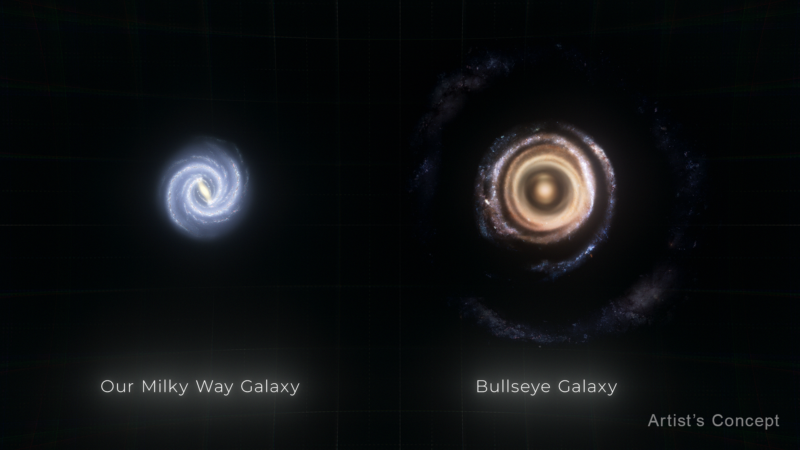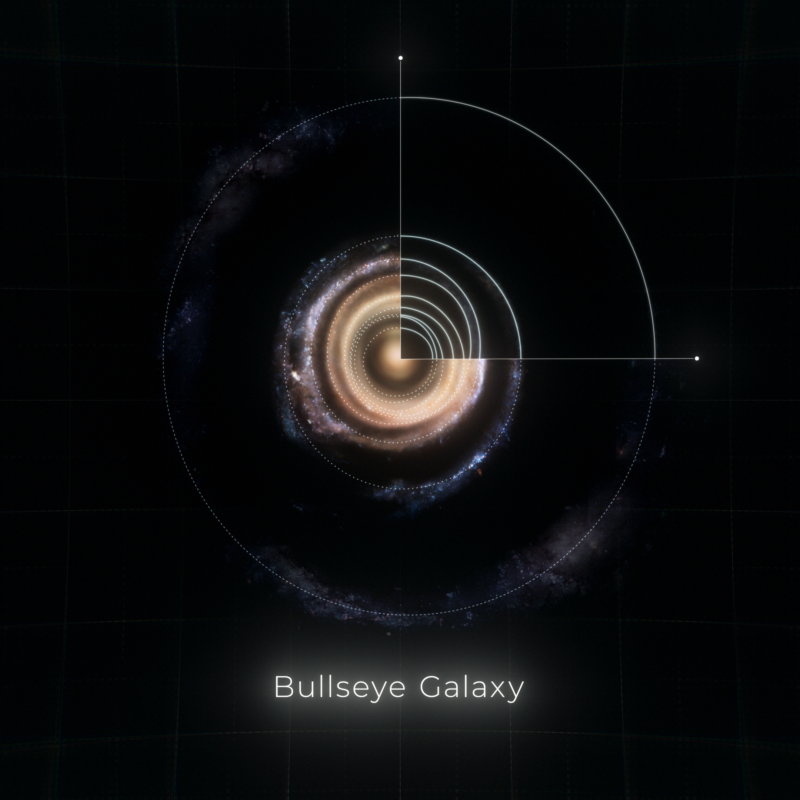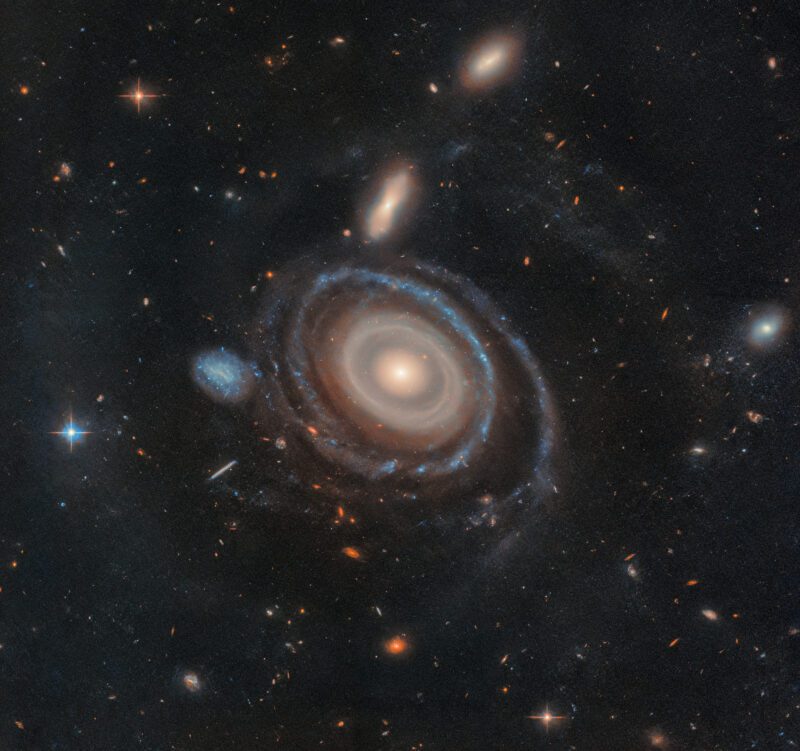Galaxy with 9 rings following collision
The galaxy formerly known as LEDA 1313424 – now nicknamed the Bullseye – is a monster. It’s 2 1/2 times larger than our home galaxy, the Milky Way. A team of researchers said on February 4, 2025, that they discovered nine rings around this galaxy – the most yet observed for any galaxy – and that the rings are the result of a collision with a smaller galaxy. The small galaxy dove through the heart of the Bullseye, triggering new star formation in these nine rings. In that way, the rings are like ripples spreading outward from a rock dropped in a pond.
In the image above, the small culprit is the blue galaxy just to the left of the Bullseye.
Lead author Imad Pasha from Yale University said:
This was a serendipitous discovery. I was looking at a ground-based imaging survey and when I saw a galaxy with several clear rings, I was immediately drawn to it. I had to stop and investigate it.
The team published their results in the peer-reviewed The Astrophysical Journal Letters on February 4, 2025.

Shot through the heart
The research team used both the Hubble space telescope and the W. M. Keck Observatory in Hawaii in their follow-up observations. Hubble found eight of the rings, while Keck data confirmed a ninth ring. The data also showed the small blue galaxy just to the Bullseye’s left is the one that dove through the heart of the galaxy some 50 million years ago. A thin gas trail still connects the two, though they are now 130,000 light-years apart.
The rings themselves are waves of star formation, triggered by the collision with the smaller galaxy. While colliding galaxies are not new, the researchers said it was rare for one galaxy to so precisely pierce the heart of another. That, plus the rings around the galaxy, give the Bullseye a very apt name indeed.
Some of the galaxy’s rings are moving outward while others are moving inward. Co-author Pieter G. van Dokkum of Yale said:
We’re catching the Bullseye at a very special moment in time. There’s a very narrow window after the impact when a galaxy like this would have so many rings.

Confirmation of a theory
The rings don’t surround the galaxy in perfect concentric circles. But the rings do follow the pattern theorized by astronomers as to what would result in such a collision. The outer rings are more spaced out. Meanwhile, the inner rings are bunched together. Van Dokkum said:
That theory was developed for the day that someone saw so many rings. It is immensely gratifying to confirm this long-standing prediction with the Bullseye galaxy.
The two outermost rings formed quickly and spread out. Then the stars began to pile up along with dust moving outward, triggering more star formation. Astronomers hope to find more galaxies like this soon. Van Dokkum said:
Once NASA’s Nancy Grace Roman Space Telescope begins science operations, interesting objects will pop out much more easily. We will learn how rare these spectacular events really are.
Bottom line: Scientists have discovered a galaxy with nine rings around it. The rings are evidence of an earlier collision, and the rings are places where new stars are forming.
Source: The Bullseye: HST, Keck/KCWI, and Dragonfly Characterization of a Giant Nine-ringed Galaxy
Read our previous article: Yet another atmospheric river to strike US West Coast today
